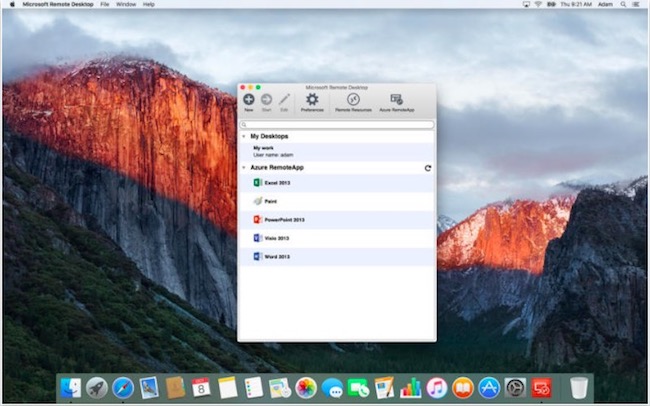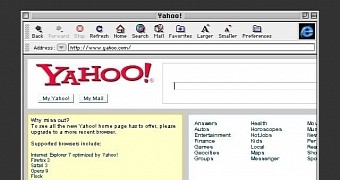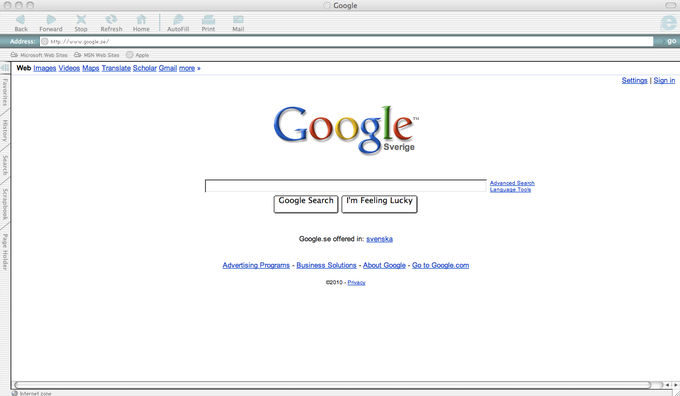This means that Internet Explorer is not available on the latest Mac devices. Mac operating systems 7.01 through Mac OS X 10.6 can run the application. These are all available only on the older Apple devices. Alternatives of Internet Explorer For MAC: There are a lot of alternatives to the Internet Explorer application available on all platforms. Run IE on Mac OS X. There are still a few alternative ways to run Internet Explorer on Mac. But one thing is certain — in order to use Internet Explorer, you need access to a Windows system. You could access the Windows environment either locally on your Mac (by virtualization or dual-booting), or remotely (using Cloud Browsing solutions). Note: Mac Explorer is no longer under development, and it is no longer available for sale. Mac Explorer is a file browser and management tool that brings a hierarchal navigation system to the Mac. The first ever Mac OS X file browser to offer tabbed file browsing, Thumbnail previews of pictures files and filter based file browser, Mac Explorer offers a totally new and unique file browsing.
Run Internet Explorer on Mac is easy.
Globally, there are millions of users who are required to use Microsoft Internet Explorer for banking, human resources, tax systems, and many other corporate intranets. Google Chrome, Mozilla Firefox, Opera, and even Microsoft Edge are free browsers that are more stable and secure than IE. However, Internet Explorer is still the second most popular web browser in the world. This leaves current Mac® users in a bit of a bind. This is where Parallels Desktop® for Mac arrives as a reliable solution.
How to install Internet Explorer on Mac with Parallels Desktop:
- Download Parallels Desktop for Mac.
- Install, migrate your PC, or use an existing Boot Camp® partition of a Microsoft Windows operating system.
- Launch Internet Explorer in Microsoft Windows simultaneously alongside macOS® without rebooting
With Parallels Desktop you can easily download and run any popular PC programs, such as Microsoft Access, Paint Tool Sai or even play games.
Issues with Other Solutions:

Boot Camp – This option demands for a partition on an existing hard drive. This means a user would be required to wipe their Mac hard drive and erase all existing files and partition that hard drive to make space for a Windows operating system. These two partitions on the hard drive are not seamlessly running side by side—they are divided, and act as such. With Parallels Desktop, users run a virtual machine on their Mac, and the rich integration of the two operating systems creates a seamless match. Users are then able to copy and paste, drag and drop, use Spotlight to search within Windows, or use even Cortana on Mac. Not to mention, the ability to share folders between the two operating systems allows users to avoid rebooting your Mac every time.
Pretend to run Internet Explorer with Safari’s development tools – This option creates the opportunity for unexpected interruptions to your workflow later. Within Safari, there is an advanced setting to “Show Develop Menu in Menu Bar,” which will provide you with a drop-down menu with Develop tools to launch a webpage in another browser, such as Internet Explorer.

This is a fantastic built-in resource for web developers to test—but for an everyday user, this is not ideal. If users select one of these above options, Safari will send a different user agent. (A user agent is the string of code that a user’s browser sends to the desired site to let the site know which browser the user is attempting to access the site from.) This doesn’t always work, as web forms are rarely supported through this method, and can cause web masters to ban any further access via Safari. This is not an ideal solution for long-term use, and users will not know if this solution will work until settings are changed and attempted.
Need to buy a Microsoft Windows operating system? Buy directly from Microsoft below:
Parallels Desktop is the #1 choice of Mac users for over 10 years for running Windows on Mac. If you’re looking to run Internet Explorer for Windows on your Mac without rebooting, we encourage you to download a FREE 14-day trial of Parallels Desktop for Mac and get started today.
Mac users might be wondering, “What is Microsoft Edge?” In a nutshell, it’s a modern web browser designed to replace Internet Explorer, which has been the default browser on Windows machines since 1995. Released alongside Windows 10, Microsoft Edge is made to compete with other highly popular alternatives such as Mozilla Firefox and Google Chrome.
Initially, Microsoft was hoping that the native integration with Windows search and Cortana, a voice-activated assistant, would give the Microsoft Edge browser an advantage over the competition. But the company quickly understood that lacking cross-platform support was a big hindrance — so they updated the underlying code to allow Microsoft Edge to work with other operating systems.
Boost your browser with Setapp
Speed up your browsing, hide specific pages, or remove any traces of your browsing history. Every scenario covered with Setapp.
Is Microsoft Edge Available For Mac?
The first announcement that hinted at the possibility of Microsoft Edge running on macOS was its move to a Chromium-powered code engine. Finally, in 2019, Microsoft did release an early version of Microsoft Edge browser for Mac called Canary, which is a project name for the beta. The Canary version of Microsoft Edge is currently only accessible through the Microsoft Edge Insider program, which grants early access to new updates and betas before they roll out to market.
Releasing the Edge Microsoft beta was a timely announcement for users who had recently switched from Windows to Mac, or used both Windows and Mac in their daily lives and didn’t want to keep switching browsers.
Generally speaking, users do prefer to use one web browser across all their devices due to the similar user experience (e.g. having common features and buttons in the same place) as well as the possibility of syncing their history, bookmarks, and preferences. And while competing browsers had been enjoying those perks for years, Microsoft lost some of that momentum with their late transition from Internet Explorer to Edge for Mac.
How is Microsoft Edge for Mac different?
Microsoft used to be very particular about protecting their proprietary design language and exclusive Windows support. But the modern user demands a more natural crossover between devices and operating systems — Microsoft Edge included.
To make the move to macOS as seamless as possible, Microsoft had to make some changes and updates to suit the Mac environment. Most notably, the interface now more closely matches the global macOS design. For example, Microsoft Edge browser for Mac has updated fonts, navigation bars, and menus to mimic other Mac apps. Mac users will also enjoy trackpad gestures and hotkeys that feel right at home. Microsoft has even added preliminary support for Touch Bar and aims to include more contextual actions in the future.
Web developers will be grateful for the IE mode in Microsoft Edge for Mac, which replicates older Internet Explorer environments to help with testing and viewing dated websites that aren’t designed for modern web browsers.
Windows users will be happy to see that the Collections feature has made the jump. Collections is similar to bookmarking, but lets you save text, images, websites, and more into one place via a simple drag-and-drop. Later, your saved material can be shared with others in just a few clicks — fantastic for collaborating quickly with colleagues, family, and friends.
As Microsoft Edge is currently in its early stages on Mac, its development team is actively asking for feedback from users to help shape the product roadmap.
How to download Microsoft Edge for Mac
If you’re looking for the Microsoft Edge for Mac download — let’s get started! First, you’ll need to be running macOS 10.12 (Sierra) or above, which you can check by clicking on your Apple menu and then About This Mac. If you’re up to date, here’s what to do next:
Open the Microsoft Edge Insider Channels website. Note that Microsoft Edge is still in beta and might be buggy.
Under the Canary Channel, click Download. Ensure that beneath the download button, it says macOS — if not, you’ll need to click the dropdown arrow and select it.
Accept the license terms
When the Edge browser for Mac download has finished, open the download package
Click Continue ➙ Install
Enter your password ➙ Install Software
Once the installation is finished, it will ask if you want to delete the installation files. Click on “Move to Trash”.
Open Microsoft Edge by finding it in your Dock or Applications folder
To enjoy the best cross-device experience after completing your Microsoft Edge download for Mac, consider logging in to your Microsoft account from the Edge browser. To do this, open Microsoft Edge, then click on the profile icon next to the URL bar and click Sign In.
More better apps for your Mac
If you’re accustomed to using Microsoft Edge and happy that it’s moving to Mac, you might also wonder about other Microsoft apps. But Microsoft is yet to release their full suite of Mac software. Thankfully though there are some amazing alternatives that readily fill the gaps without breaking the bank. In fact, you can get all the apps you need for Mac with a single subscription service called Setapp, which grants you access to more than 150 apps.
Get a perfect alternative for MS tools on Mac
Download an all-in-one collection of apps that can replace every Microsoft tool you’ve ever used. The chances are you’ll love them even more.
But before you even start installing new apps, you might want to clean up and optimize your Mac for best performance using CleanMyMac X — a lightweight tool made to improve, secure, and maintain your Mac in top shape in just in a few clicks.
Launch CleanMyMac X
Navigate to System Junk ➙ Scan
When the scan is done, Review Details and Clean everything you don’t need
Repeat the process once a month or so to keep your system running smoothly
Looking for something similar to Microsoft Word? Try Ulysses, a writing and Markdown editor for Mac that favors a beautiful, simple interface to allow you room to do your best work. The app also lets you set a word count goal to hit every day to motivate you to write more.

Working across devices? Ulysses synchronizes your documents and work in progress across them all using a cloud-based data storage system, so you can pick up where you left off.
Microsoft Internet Explorer Mac
If you find yourself accidentally deleting files, experiencing data corruption, or being unable to access folders on your USB devices then you might want to try a high-quality file recovery tool.
Disk Drill is a simple application designed to do just that, and do it well. When you need to get a deleted file back, simply open the app, find the hard drive where the file was located in, and click Recover. A magical algorithm will take it from there.
Finally, as all of us come across PDFs every day now, a good PDF editor is a must. Try PDFpen, which rivals the best on the market for a fraction of the price. Featuring OCR (Optical Character Recognition) technology, PDFpen lets you convert PDFs to text and make edits and updates without a hitch. It also comes packed with every PDF editing feature you’ll ever need, including the ability to merge PDFs, sign forms, draw shapes, and redact personal information.
Free Explorer For Mac
Best of all, CleanMyMac X, Ulysses, Disk Drill, and PDFpen are all available for a free 7-day trial with Setapp, a platform that gives you access to more than 150 Mac apps that cover everything from editing photos to keeping tabs on cooking recipes. So if you just install Microsoft Edge and Setapp — you Mac environment would be fully complete in minutes.
Meantime, prepare for all the awesome things you can do with Setapp.
Read onSign Up
Explorer Microsoft For Mac Osx
Windows Explorer For Mac
